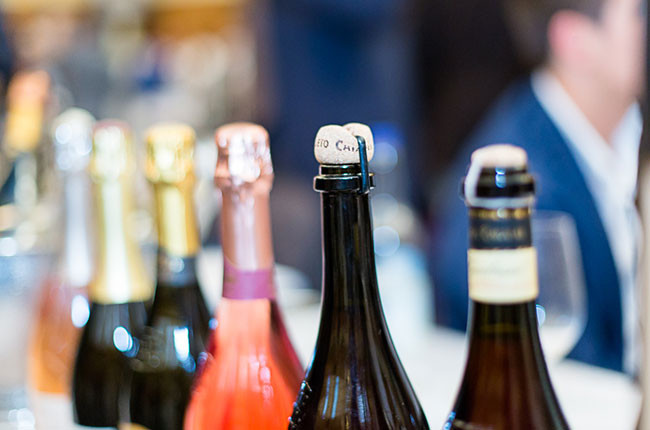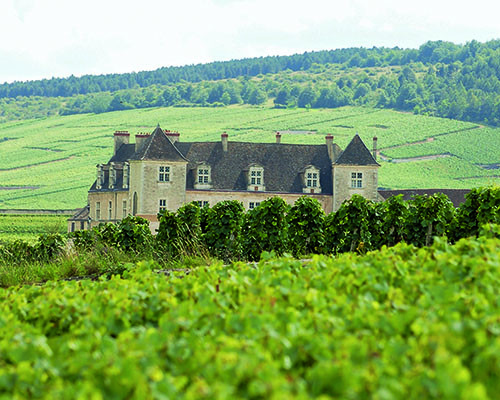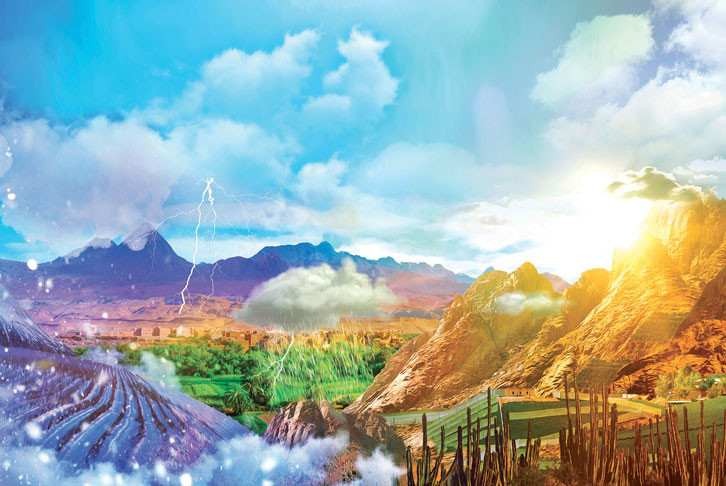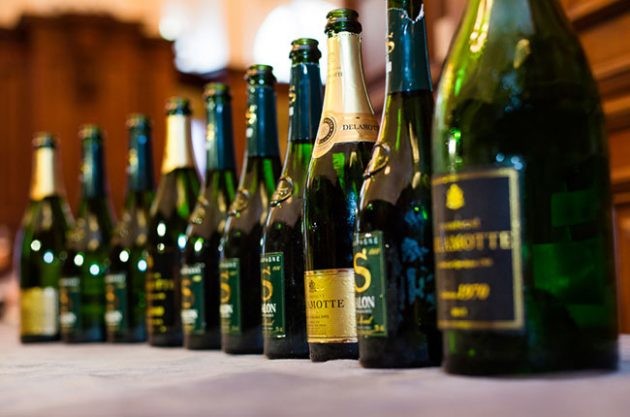Many wine styles involve the use of sugar in production, but should we be feeling concerned about the quantity used? Chris Wilson looks at the facts behind this ‘devil’ ingredient.
(Originally published on the August issue of Decanter magazine. Click to subscribe>>)

EARLIER THIS YEAR a friend gave up sugar for charity; no cakes, fizzy drinks or sweets passed her lips for 42 days. Knowing that she’s a self-confessed Haribo addict, I had to ask how she had coped. ‘Wine,’ she replied, ‘lots of wine.’ I didn’t have the heart to tell her that, depending on what she was drinking, she may have been getting her sugar fix with every sip.
Sugar has replaced fat as the dietary no-go with numerous studies, newspaper features and books demonising its negative health effects and its ubiquity in processed food and drink. But does this mean we should be worried about the sugar found in wine? All wine contains sugar to some degree, despite most wines being fermented to ‘dryness’, and many wine styles involve the use of sugar in their production. Sugar and wine have always had a close relationship: from checking grape sugar levels in the vineyard to picking the fruit at optimum ripeness and making adjustments in the winery, the two go hand-in-hand.
There’s strong evidence to suggest that many wine styles were much sweeter in the past than today. Take Champagne; when 168 bottles of 19th-century Veuve Clicquot, Heidsieck and Juglar were discovered at the bottom of the Baltic Sea in 2010, researchers were surprised by the residual sugar levels, with the Veuve Clicquot clocking up a huge 140 grams per litre (g/l), compared to less than 12g/l for most Champagnes today.
In a report on the find, it was noted that in the mid-1800s the Russian market had a penchant for very sweet wine, sometimes containing 300g/l of sugar, and it was common for diners to add spoonfuls of sugar to wine at the dining table.
‘Champagne used to be much sweeter centuries and decades ago,’ confirms Moët & Chandon’s chef de cave Benoît Gouez. ‘Today the Brut category is the most important, but the categories with a higher dosage are redeveloping, too.’
Serving a purpose
Champagne isn’t the only wine to become less sweet over time – the same can be said of Barolo, which was often made in a sweet style until the mid-19th century when the French oenologist Louis Oudart was asked by the Marchesa of Barolo to create a more noble style for her native red wine, and the sweet styles soon disappeared.
On the flipside, some wines have gone the other way. In Decanter’s January 2016 Sauternes and Barsac panel tasting, Stephen Brook noted that 25 years ago 120g/l of residual sugar was considered high, but many of the wines they had tasted were pushing 180g/l. At harvest, grape juice has 200g/l-400g/l of sugar, so these are very sweet wines indeed.
Grapes contain more sugar than many other fresh fruits, and this is made up of roughly half-and-half glucose and sucrose.
These sugars are integral in the fermentation process, as Tony Milanowski, who leads the Viticulture & Oenology degree course at Plumpton College in East Sussex, explains.
‘The sugars serve a variety of purposes within the yeast cell,’ he begins. ‘They are converted primarily into ethanol and carbon dioxide, and to a lesser extent other metabolites, of which there are glycerol, pyruvic acid, higher alcohols, fatty acids and esters.’

Once all the glucose and sucrose have been used by the yeast cells, what remains in the wine are these metabolites, as well as pentose sugars – these are five-carbon chain sugars which are not processed by the Saccharomyces cerevisiae yeast. ‘Pentose sugars are not particularly sweet and they are not in large quantities either,’ says Milanowski, ‘but there are polysaccharides that do contribute sweetness, and they are either coming from the grape as part of the structural elements of the berry, or they are excreted by yeast.’
He believes that much of the sweetness we perceive in dry wines comes from aromas, however, rather than anything such as non-fermented residual sugars in the wine. ‘When we say a wine tastes sweet it’s usually other compounds, often associated with aromas, we are referencing. When we smell fruity aromas, we have a tendency to think they taste sweet, regardless. The threshold for detecting sugar in wine is 3g/l-5g/l, and most dry wines have less residual sugar than that.’
Sweet sensation
Another attribute often thought to contribute to the perception of sweetness in wines, particularly in Amarone della Valpolicella, is glycerol. A finished Amarone can contain 50% more glycerol than other red wines due to the concentration inherent in the appassimento process. ‘Glycerol by itself, when you taste it with water, may have a slightly sweet, viscous characteristic,’ says Milanowski, but he argues that it’s virtually undetectable in table wines, even including Amarone.
He offers an interesting argument as to why humans are not very good at judging sweetness on the palate. ‘There’s a physiological idea that humans want to get as many calories as possible, and sweet foods are a great way of getting calories,’ he says. ‘But if we were really receptive to sweetness we couldn’t eat large quantities of sweet foods.’ Thus we are less able to taste sweetness than, say, acidity or bitterness.
‘Furthermore, when we look at the balance of a wine, we are looking at a combination of all those characters – sweetness, acidity and bitterness,’ he adds. ‘We find that acidity will reduce the apparent sensation of sweetness, and vice versa. The colder things are, the less sweet they taste, too; ice cream tastes sweet when it’s cold, but if we allow it to melt it tastes even sweeter. The cold helps alleviate some of the sweetness.’
As well as the natural sugars found in grapes and wine, there are a number of winemaking processes that see sugar added in order to improve or stylistically alter the finished product. One such process is chaptalisation – named after its French originator Jean Antoine Chaptal – which is sucrose being added to grape juice prior to fermentation, in order to enrich the juice and achieve a higher level of potential alcohol.
In cool-climate production regions such as England, France, Germany and New Zealand, it is common to chaptalise – especially in bad weather years and in areas where full grape ripeness is not always achieved – but the process is strictly regulated. ‘You want to chaptalise as little as possible,’ says winemaker Liam Idzikowski from Lyme Bay Winery in Devon. ‘When you add sugar you’re diluting the wine, essentially, so for every kilogram of sugar you add, you get 0.66 litres of extra wine that hasn’t got any flavour at all.’
At Lyme Bay, Idzikowski aims for 10%-10.5% potential alcohol in the grapes at harvest, and will chaptalise to get it up to this level if there’s a shortage of sugar in the grapes at the time of picking. When making sparkling wines he also adds sugar at the end of the process, but for very different reasons. The ‘dosage’ stage of the traditional method process for sparkling wines sees the wine topped up after disgorgement (removal of the used yeast cells) with what’s known as the liqueur d’expédition – sugar dissolved in a base wine. Sometimes it may contain other constituents too, such as sulphur dioxide or brandy.
Along with sweetness, the dosage adds body, balance and complexity to the wine and can also raise the fruit profile.
‘Dosage is the last step in the process; the last chance to fine-tune the profile of the wine and help it to recover from the oxidative trauma of disgorgement, and to contribute to its ageing potential,’ explains Benoît Gouez, who adds 9g/l to Moët & Chandon’s flagship Impérial NV.
Idzikowski uses this stage to hone his wines. ‘You want the added sugar to bring out the best in the wine,’ he says, ‘and it’s also a great way of making points of difference in your wines – you can’t force a wine to be something it’s not, but you can help manipulate it at the disgorging stage.’
Chaptalisation and dosage demonstrate how sugar and winemaking are closely linked, but these two methods leave very little sugar in the end product. For Champagne with a post-dosage residual sugar level of 9g/l, that equates to 1.13 grams of sugar in a 125ml glass, which is just over a quarter of a teaspoon – there are more than two teaspoons of sugar in a 125ml serving of gin and tonic.

Calorie concerns
Most wine consumed in the UK is ‘dry’ and contains less than 3g/l residual sugar, so consumption of sugar as a result of drinking dry wines is unlikely to cause any health issues.
‘You are more likely to get the sugarrelated side effects from sweet styles of wine, such as fortified wines or dessert wines,’ says Dr Sarah Jarvis, a medical advisor to UK alcohol charity Drinkaware. ‘Sugar is very rapidly absorbed into the system. It stimulates your dopamine levels, which can make you crave that feel-good feeling you get when you consume alcohol,’ she adds.
Dr Jarvis is quick to point out that while sugar isn’t a particular problem in dry wines, the alcohol and its associated calories can be a real concern. ‘There are nearly as many calories in a gram of alcohol as there are in a gram of pure fat,’ she says. Alcohol has 7 calories per gram, so excessive consumption can lead to weight gain, especially with high-alcohol wines. To put this into context, a 125ml glass of Champagne with 9g/l sugar and 12% alcohol contains 88.5 calories, of which 84.5 calories, or 95%, are from the alcohol.
Aside from the calories in the wine itself, it is widely believed that alcohol stimulates appetite, especially for foods that are high in salt and fat. This may explain why peanuts and crisps become suddenly irresistible after a glass or two, which could be an additional factor that leads to weight gain as a result of alcohol consumption.
If you can keep the salty snacks at bay, however, and don’t drink too much dessert or fortified wine (both styles can have 100g/l- 200g/l sugar or more) – or 19th-century Champagne, for that matter – there’s no reason to think that a glass of wine is bad for you purely in calorie terms. Especially if you’ve decided to give up sugar for charity.
Chris Wilson is a journalist, writer and wine consultant who has also qualified as a viticulturist and winemaker at Plumpton College
Translated by Sylvia Wu / 吴嘉溦
All rights reserved by Future plc. No part of this publication may be reproduced, distributed or transmitted in any form or by any means without the prior written permission of Decanter.
Only Official Media Partners (see About us) of DecanterChina.com may republish part of the content from the site without prior permission under strict Terms & Conditions. Contact china@decanter.com to learn about how to become an Official Media Partner of DecanterChina.com.











Comments
Submit